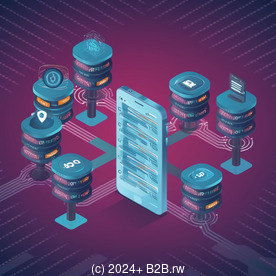
Comprehensive Analysis of Multimedia Management Systems




What Are Multimedia Management Systems?
Multimedia Management Systems (MMS) represent a groundbreaking approach to managing various forms of digital content, which include images, videos, audio files, and animations, within Content Management Systems (CMS). As our communication paradigms shift increasingly towards visual and auditory channels, the efficiency and effectiveness of these systems have become crucial. Without advanced multimedia management, organizations may face chaos in their digital asset libraries, leading to wasted resources, missed marketing opportunities, and declining engagement.
The central feature of an MMS is its ability to automate essential workflows related to multimedia asset management. This includes the uploading of files, applying metadata for better organization, searching for specific content, and ensuring proper archiving for future accessibility. Such automation is especially significant in todays fast-paced digital environment, where businesses must respond rapidly to changing market conditions and consumer preferences.
Moreover, a comprehensive MMS integrates tools that provide analytical insights into content usage and engagement, enabling organizations to make data-driven decisions. It empowers teams to find the right assets quickly, minimizing downtime and maximizing productivity across various departmentsbe it marketing, sales, or customer service.
In an era marked by content overflow, having a robust multimedia management system is not just an operational advantage but a strategic imperative for e-commerce platforms, media companies, educational institutions, and any business leveraging visual storytelling to capture audience attention.




Significance of Multimedia Management Systems
The significance of multimedia management systems stretches across varied domains, yielding benefits that resonate through organizational economics, political operations, social dynamics, environmental considerations, and beyond. Let's delve into each perspective:
Economic Perspective
From an economic viewpoint, multimedia management systems can result in substantial cost savings and increased operational efficiency. By centralizing multimedia assets, organizations reduce human error, minimize duplication of work, and lower costs associated with unnecessary storage solutions. The time saved on searching for files and managing assets can be redirected toward more important work, leading to enhanced productivity. For example, an e-commerce platform that employs an MMS effectively can update product images and descriptions in a fraction of the time compared to manual approaches. This rapid adaptability improves customer experience and increases the likelihood of purchases, thus bolstering revenue streams.
Additionally, by tracking asset usage and performance, MMS can provide valuable insights for budget allocation. Organizations can invest their resources in content types or formats that yield the highest engagement. With data analytics capabilities, businesses can foresee trends and pivot strategies accordingly, ensuring they remain competitive in a constantly evolving market landscape.
Political Perspective
Within the political arena, multimedia management systems play a pivotal role in shaping public discourse and engagement. Political entities use multimedia to communicate effectively with constituents, offering transparency and accountability. An MMS aids in managing campaign materials, such as videos, speeches, graphics, and social media content, ensuring a consistent message across various platforms.
During election cycles or public policy announcements, rapid dissemination of information becomes crucial. MMS enables political organizations to craft and distribute messages quickly, aligning them with current events and public sentiments. Utilizing these systems, political initiatives can enhance public outreach and mobilize support, influencing voter engagement and participation decisively.
Furthermore, the importance of managing sensitive content with due diligence in todays increasingly polarized political climate cannot be overstated. MMS can provide layers of security and access control, ensuring that only authorized personnel manage critical political content, thus minimizing the risk of misinformation.
Social Perspective
Socially, the accessibility of multimedia content is vital in engaging diverse audiences. Multimedia Management Systems enhance inclusiveness by allowing organizations to create content suited to various demographic groups. They provide functionalities enabling users to tag and categorize content intuitively, so that those with different abilities or preferences can still access and interact with the material effectively.
This becomes especially important in personalizing content delivery in educational contexts, where different learning styles necessitate varied learning materials. MMS can help organizations to utilize user-generated content, enabling community-driven engagement and fostering authenticity in brand representation. By focusing on social engagement through multimedia, companies can build stronger relationships and trust with their audiences.
Environmental Perspective
Considering environmental impacts, multimedia management systems foster sustainability by minimizing redundant content storage and reducing energy consumption associated with managing digital assets. Efficiently handling multimedia files decreases the need for physical storage solutions and server space, both of which have carbon footprints associated with their maintenance and energy consumption.
As companies shift towards cloud storage and remote access management, they can also leverage MMS to implement data archiving solutions that further reduce operational expenses. The environmental responsibility reflected in such efficient systems can enhance brand loyalty, particularly among eco-conscious consumers.
Legal Perspective
Legally, the management of multimedia content is increasingly complex due to the myriad of copyright laws and intellectual property rights that govern digital assets. Multimedia management systems help organizations to navigate this landscape by providing tools for effectively managing licensing information, ensuring compliance, and reducing the risk of infringement. The capability to track where and how content is used also safeguards against potential legal disputes.
By implementing strict usage policies and compliance regulations within the MMS settings, companies can ensure they remain on the right side of the law while protecting their digital assets. In a world where legal penalties for copyright infringement can be severe, the value of legal oversight provided through such systems cannot be underestimated.
Historical Perspective
The historical evolution of multimedia management systems reveals the progressive advancement of digital content creation. In past decades, content was primarily managed through rudimentary file systems, leading to inefficiencies and challenges regarding content retrieval. As media consumption patterns shifted with the advent of the internet and social media, it became imperative for organizations to adopt robust MMS solutions capable of handling vast amounts of multimedia content effectively.
Through time, the integration of multimedia management with content management systems has grown in complexity, allowing for sophisticated features that cater to the diverse needs of modern organizations. Today, MMS are indispensable tools that enable businesses to ensure their multimedia content is not only stored but optimized for various channels.
Scientific Perspective
From a scientific standpoint, multimedia is essential for the dissemination of research and educational materials. Multimedia management systems facilitate the effective sharing of complex scientific data through engaging formats like infographics, animations, and tutorials that make information digestible for wider audiences.
For academic institutions, an MMS can help streamline the process of creating educational media, enabling the creation of blended learning environments that cater to diverse student needs. Effective management of science-related multimedia can significantly enhance understanding and retention of information, empowering students and researchers alike.
Technological Perspective
Technologically, multimedia management systems embody a convergence of multiple digital technologies, including cloud computing, big data analytics, and artificial intelligence. These platforms integrate advanced functionalities like dynamic search features, automated tagging powered by machine learning, and robust reporting capabilities that give insights into content performance.
The ability to utilize these technologies allows organizations to optimize user experience through personalized content delivery, data-driven decision-making, and seamless integration with other digital platforms. Furthermore, as technology progresses, the scalability of MMS ensures that organizations can grow and adapt to meet new challenges in the digital landscape.
Health Perspective
In the healthcare sector, where timely and accurate dissemination of information is crucial, multimedia management systems can significantly aid public health campaigns, emergency communications, and educational initiatives. Efficiently managing audiovisual health content ensures that vital information reaches the public swiftly and accurately, thus improving public health outcomes.
MMS can facilitate the creation and sharing of informative content related to healthcare services, public health initiatives, and disease prevention campaigns. As healthcare continues to evolve with telemedicine and digital health solutions, the role of multimedia management in disseminating crucial health information will only grow.
Psychological Perspective
Psychologically, the effectiveness of multimedia content in capturing attention and engaging audiences has far-reaching implications. Well-managed multimedia content can create impactful narratives, awakening emotional connections that resonate with consumers. This emotional engagement drives brand loyalty and fosters a sense of community among consumers who identify with the brand's storytelling.
Furthermore, using multimedia to evoke psychological triggers can lead to better information retention, thus significantly impacting marketing strategies. An effective MMS ensures that the multimedia content used to connect with consumers is not just accessible but curated to maximize its emotional and psychological impact.
Educational Perspective
In educational settings, multimedia management systems promote innovation in content creation and delivery. By managing videos, podcasts, interactive elements, and tutorials effectively, educators can create rich, engaging educational experiences tailored to diverse learning preferences. The ability to combine various multimedia formats enhances educational effectiveness, supporting both visual and auditory learning.
Moreover, as remote learning becomes more prevalent, the role of MMS in centralizing educational resources becomes paramount in ensuring that students have access to high-quality materials. Institutions leveraging MMS can create comprehensive virtual learning environments that transcend geographical limitations, fostering global learning communities.
Business Perspective
From a business context, the effective management of multimedia assets can enhance market competitiveness and drive brand recognition. Companies that invest in robust MMS solutions can tailor their marketing strategies through high-quality, engaging content that resonates with their target audience. This not only helps in attracting potential customers but also strengthens relationships with existing clients.
Furthermore, by facilitating collaboration and efficiency among marketing, sales, and support teams, MMS can streamline the production of multimedia-oriented campaigns. Organizations that embrace multimedia as a core part of their business strategy are often more responsive to market changes, allowing them to maintain an edge over competitors.




Core Competencies of Multimedia Management Systems
Multimedia Management Systems incorporate a broad set of features that enhance the overall management and usability of digital assets. Below are several critical competencies that support efficient multimedia management:
- Asset Organization: Robust tagging and categorization mechanisms facilitate quick access to multimedia assets, significantly improving overall workflow efficiency in content creation and management.
- Version Control: Organizations often work with multiple iterations of content; hence, maintaining a system for version control is essential. It tracks changes, allowing teams to revert to previous iterations as needed and preserving valuable content history.
- Collaboration Tools: Many MMSs are equipped with functionalities that facilitate real-time collaboration among team members. This includes commenting features, task assignment, and shared workflowsall integral to fostering teamwork and creativity.
- Analytics and Reporting: Detailed analytics capabilities offer insights into asset usage trends, user engagement metrics, and content performance. Organizations can leverage this data to optimize strategies, improve return on investment (ROI), and justify marketing expenditures.
- Integration Capabilities: Modern MMSs can seamlessly integrate with other business tools, including Customer Relationship Management (CRM) systems, social media platforms, and marketing automation software. This interoperability enhances the organizations overall digital ecosystem.
- User Permissions and Security: Security features within MMS ensure that only authorized personnel can access and manage sensitive multimedia content. This is crucial for compliance with legal regulations and protecting proprietary assets from unauthorized access.
By implementing these competencies, organizations can streamline their content management workflows, maximize the utilization of multimedia assets, and significantly enhance audience engagement. This seamless integration of assets creates an infrastructure where content flows freely, while still being structured and organized.




Conclusion: The Essential Role of Multimedia Management Systems
In conclusion, multimedia management systems are not merely tools for organizing digital content; they are essential platforms for ensuring strategic excellence in managing multimedia assets. They streamline workflow processes, help maintain brand consistency, ensure compliance with legal standards, and enable effective audience engagement through high-quality multimedia content.
As the digital landscape evolves, organizations that prioritize robust multimedia management will create a solid foundation for enhanced engagement, data-driven decision-making, and operational efficiency. In an environment marked by an ever-increasing reliance on multimedia content for communication and marketing, the adoption of MMS is a strategic necessity.
Investing in a comprehensive multimedia management system is an investment in future readiness. As businesses and organizations prepare to navigate the complexities of a digital-first world, the role of MMS becomes undeniably pivotal in connecting, educating, and engaging audiences worldwide.
Unlock the Power of Multimedia Management with Our Solutions
Are you ready to transform your content management processes? Our Multimedia Management Systems start at just USD 1,000 . Visit our Checkout Gateway to secure your solution today! Should you have any questions or require further assistance, please feel free to reach out to us at www.b2b.rw via email, phone, or our online form. After your purchase, please share your payment receipt and details so we can assist you with your Multimedia Management System setup. We appreciate your interest!
